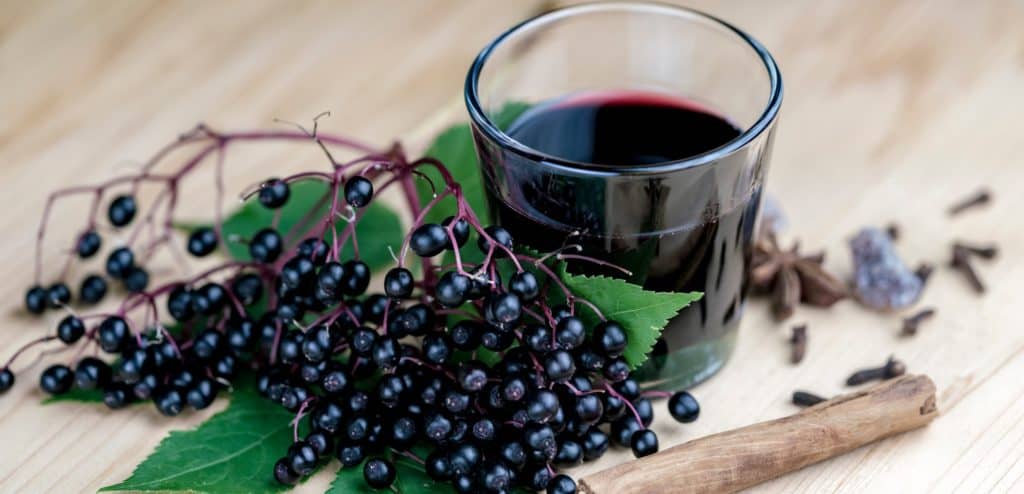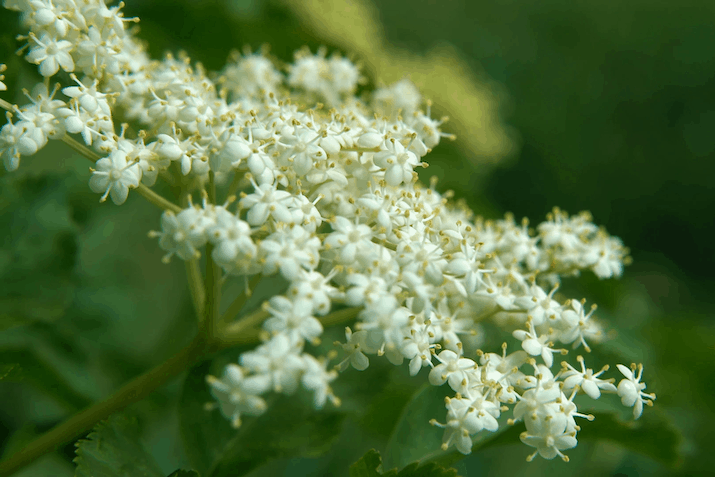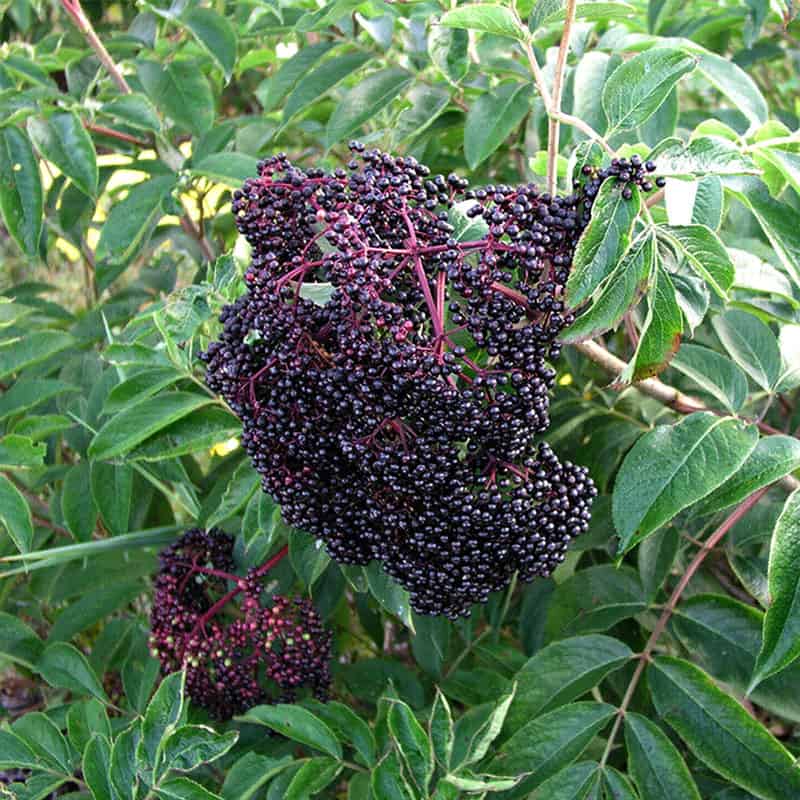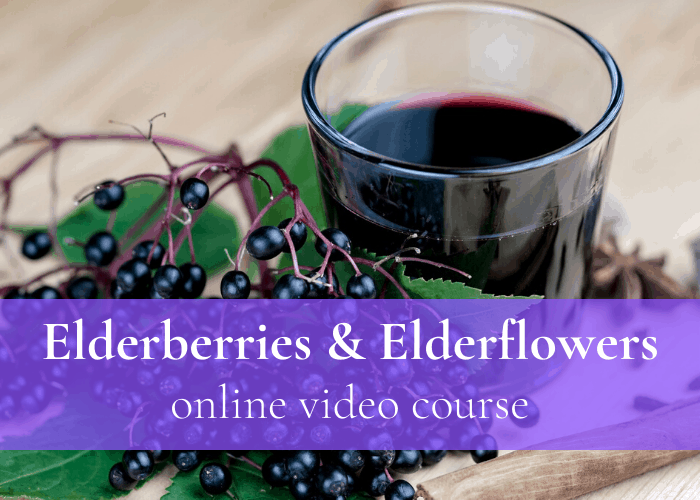Elderberry and Cytokine Storms
You may have read something on the internet somewhere about some study that was done, “proving” that Elderberry causes a cytokine storm.
The most important answer that i can give you to this concern is this:
If you are concerned, do not work with Elderberry. There are so many herbs in the world, helpful in so many ways. You do not need to rely on one individual herb if you feel concerned about its safety, or if you are allergic to it, or anything else. It doesn’t matter how much someone else loves that herb and says it’s the best thing for them: not all best herbs are best for all bodies. The best thing for you is the best thing for you, not necessarily the best thing for someone else.

Ok, but what is the story with Elderberry, and why do people think that it’s causing cytokine storms?
Well first, we need to understand what a “cytokine storm” is.
The “Cytokine Storm” has gotten a lot of press in our culture, and most of it is fear that’s unnecessary.
First, what is a cytokine? It’s not one single thing: it’s a category of communication chemicals in your body that signals a need for an immune response. Cytokines are associated with inflammation because inflammation is one of the first steps your body takes to respond – inflammation and fever are like your immune system first responders, and they start working even before your body has necessarily figured out what you’re dealing with. That’s a good thing! It allows you to get to work with strategies that can be effective against a huge variety of pathogens instead of having to wait until your body figures out which specific pathogen you’re dealing with. Figuring that out can take 8-10 hours, which allows the pathogen time to replicate and make the job of getting rid of it much harder – so we’re grateful to those immune system first responders!
Inflammation is not the only thing that cytokines are responsible for – these messaging molecules are differentiated and very complex, and they work together to regulate all the different levels of immune response.
Here’s an important quote from Paul Bergner to illustrate:
While some cytokines induce pathologies related to inflammation, others are not pathological but positive. Non-inflammatory portions of the cytokine response facilitate viral clearance and promote tissue repair, and regulate the severity of the inflammatory cytokines (Guo XJ). This may explain why steroids resulted in death in all the N5N1 patients they were given to. The beneficial and regulatory cytokines were suppressed along with the inflammatory, and anti-viral immunity was suppressed.
Our culture often labels inflammation as “bad” – and it’s definitely true that too much inflammation, especially chronic inflammation when you’re not acutely sick or injured, is super problematic.
What causes too much inflammation? Lots of boring every day things: added sugar in the diet, processed foods, industrial seed oils (canola, soy, corn, “vegetable” oils), lack of vegetables and specifically a variety of vegetables, lack of frequent daily movement, lack of sufficient sleep (8-10 hours is your body’s baseline every day requirement, even when you’re healthy!), overflowing stress – you get the picture. We might not think that these things are a big deal, because it’s “normal” to not get enough sleep, and drink a bunch of caffeine, and to eat processed foods because we’re all too busy to cook, etc.
And these things are very common – which is why so many of us have high baseline levels of inflammation even when we’re not acutely ill or injured.
As Paul makes clear in his paper (which you can find here), a true “cytokine storm” – the kind of horror movie monster threat that our culture has associated with that word – occurs only in patients who are already in intensive care or are at that stage of an illness. At that point, in this country, no herbalist will be working with that person anyway.
And as we’re thinking about this specifically as it applies to Elderberry or other herbs that are called, regardless of mechanism of action, “immune stimulants”, it’s also important to recognize that we would not be working with them at the point of an illness when a cytokine storm could occur, anyway. These are herbs that are appropriate in the first stages of exposure and early symptoms. Once someone is running a fever, traditionally we’d be switching to different herbs anyway! Cytokine storm happens in the end as a last-ditch effort – it’s not the thing that happens when you’ve just been exposed or you’re just starting to feel symptomatic.

So how should we be thinking about cytokines and illness as herbalists?
We support the body’s overall functioning: we’re looking to help the body do what it’s already inclined to do. If a person can’t build a fever, we can help with blankets and warming herbs to help them boost their temperature. If their fever is high and long, we can help with diaphoretic herbs to help them sweat it out. These actions are not molecular level actions; we don’t need to be thinking about molecular level functions to do this work. It’s definitely fun to think that way, and i love reading studies about how herbs work on molecular levels! But in the moment of acute illness, that’s not usually the best way to apply your herbal knowledge: we have much more success working holistically.
How does that relate to managing inflammation specifically?
Realistically, once a person has progressed to the point that there is a true risk of cytokine storm, that person is almost always going to be hospitalized. (There are situations in disasters or off-grid situations, or folks who have no access to medical care, where this may not be the case; that is outside the scope of this discussion.)
So our work begins by removing all sources of “unnecessary” inflammation as early as possible: if a person is ill or at risk of becoming ill (or basically, this is good for any person!), it’s time to immediately remove sugar and processed foods from the diet. It’s time to immediately ensure that the person gets sufficient sleep – and actually extra sleep, because they may be catching up from long-term sleep debt. It’s time to immediately ensure that the person is getting plenty of high-nutrient foods. Our first steps to limit inflammation are to remove anything that causes it and that can be removed.
Next, we do everything we can to support the body so that the whole immune process can progress unimpeded. What does that look like?
- Supporting lymphatic flow – That’s not just herbs like Calendula and Ground Ivy, but also making sure there is movement, even if it is limited by feeling sick.
- Supporting healthy mucous membrane tissue – Ensuring that the mucous is not too thin and failing to create a strong barrier to pathogens, and that it is not too thick, creating congestion and phlegm that is difficult to expectorate.
- Supporting a healthy fever – The administration of Aspirin and NSAIDs impede a fever and shut down entire portions of the immune response. People turn to these because we no longer have the skills and experience to support a fever at home, so it’s important to learn how to do that with confidence.
- Supporting sufficient sleep – Much more immune activity can happen when you are sleeping, or at least resting. This is why it’s so important that people have an economically realistic way to stay home when they are ill. Whatever you can do to provide the space to sleep for yourself or someone you are caring for will be worth it!
- Supporting critical nutrients – Here’s where bone broth and plenty of tea come into play. Your body requires supplies to do all this immune work, but your ability to digest food is limited because the resources that you would normally use to digest food are currently being reallocated to an immune response. Broth and tea provide nutrients in a very simple, easily absorbable format. Plus, they are complex: they contain lots of inflammation modulating components – whether that’s vitamin C or chlorophyll or certain minerals, etc – that your body can use to orchestrate the complex symphony of your immune response. Instead of forcing certain things to happen (ie, taking an aspirin to force a fever to lower), you are providing what your body needs to take the actions required in that moment.
The idea with these strategies is that if we can keep the body’s response to the illness flowing, if we remove any impediments and provide all the necessary support, they the body has the best chance to fight the disease.
That is not a guarantee of speedy recovery: there are many diseases that are simply deadly, and we will not always be able to stop all of them. But wherever there is a chance of recovery, these are the things that we as herbalists can do to make that effort the most successful possible.

So, is Elderberry safe or not?
Now that you’ve learned what the concept of a cytokine storm is, hopefully you are already looking at this claim a little differently than you might have before. The word “cytokine” refers to a whole category of messenger molecules, and some of them can turn on inflammation, some of them can turn it off, and some of them can “make decisions” about which they do, depending on the current state of the body. Also, they can do other necessary things too! So to say there is increased cytokine activity is not the same as simply saying there is too much inflammation.
Or in other words, herbs don’t “cause cytokine storms”. In fact, pathogens don’t, either! *
* That is to say, no pathogen will reliably induce a cytokine storm in all people, and in the absence of all other mitigating factors. I want to leave room for pathogens i don’t know much about, or some new one we’ve all yet to encounter – who knows, maybe it could happen! But remember, it turns out that SARS didn’t, H5N1 didn’t, and Covid-19 probably doesn’t either.
Cytokine activity is a reaction to infection or injury, and it’s a critical part of the function of the body’s immune response. When people are talking about a “cytokine storm”, what is most commonly being envisioned is runaway inflammation. If this happens, it comes from a combination of factors – not only the pathogen you’re exposed to, and not only the herbs you take – and the biggest underlying factor is the baseline state of inflammation.
To just say that Elderberry “increases cytokine response” is not necessarily inaccurate – but our imagination of what that means may be. Increasing cytokine response – making all of the messaging molecules better able to communicate – can be helpful for an immune response. Too much inflammation is too much inflammation, but “increased cytokine response” is not the same as “too much inflammation”.
The claim about cytokine storms is taking one tiny piece of information out of context and super-concentrating it, and then deciding that’s everything anyone needs to know to make a determination about whether or not Elderberry is safe. But Elderberry does a LOT more than increasing cytokine response (and remember, some cytokines are anti-inflammatory!). The action of Elderberry in the body is complex.
Here is an abstract from one study of Sambucol, an Elderberry syrup product:
Sambucus nigra L. products – Sambucol – are based on a standardized black elderberry extract. They are natural remedies with antiviral properties, especially against different strains of influenza virus. Sambucol was shown to be effective in vitro against 10 strains of influenza virus. In a double-blind, placebo-controlled, randomized study, Sambucol reduced the duration of flu symptoms to 3-4 days. Convalescent phase serum showed a higher antibody level to influenza virus in the Sambucol group, than in the control group.
The present study aimed to assess the effect of Sambucol products on the healthy immune system – namely, its effect on cytokine production. The production of inflammatory cytokines was tested using blood – derived monocytes from 12 healthy human donors. Adherent monocytes were separated from PBL and incubated with different Sambucol preparations i.e., Sambucol Elderberry Extract, Sambucol Black Elderberry Syrup, Sambucol Immune System and Sambucol for Kids.
Production of inflammatory cytokines (IL-1 beta, TNF-alpha, IL-6, IL-8) was significantly increased, mostly by the Sambucol Black Elderberry Extract (2-45 fold), as compared to LPS, a known monocyte activator (3.6-10.7 fold). The most striking increase was noted in TNF-alpha production (44.9 fold).
We conclude from this study that, in addition to its antiviral properties, Sambucol Elderberry Extract and its formulations activate the healthy immune system by increasing inflammatory cytokine production. Sambucol might therefore be beneficial to the immune system activation and in the inflammatory process in healthy individuals or in patients with various diseases. Sambucol could also have an immunoprotective or immunostimulatory effect when administered to cancer or AIDS patients, in conjunction with chemotherapeutic or other treatments. In view of the increasing popularity of botanical supplements, such studies and investigations in vitro, in vivo and in clinical trials need to be developed.
While it’s true that the study does say the syrup can “activate the healthy immune system by increasing inflammatory cytokine production”, this does not limit cytokine action to inflammatory action. In a similar study:
The three Sambucol formulations activate the healthy immune system by increasing inflammatory and anti-inflammatory cytokines production, while the effect of Protec and Chizukit N is much less. Sambucol could therefore have immunostimulatory properties when administered to patients suffering from influenza (as shown before), or immunodepressed cancer or AIDS patients who are receiving chemotherapy or other treatments.
If you’re a person with a high baseline inflammatory state, you’re more at risk of complications from excessive inflammation. Elderberry on its own should not cause excessive inflammation, and we’ve already seen that COVID-19 does not cause it in every case – because most people recover. Some people may have excessive inflammation at an end-stage of dealing with coronavirus, but not every person experiences that. There are a bunch of factors that all come together to push a body into that direction, and they don’t come together in one moment: they build up over time. If we are finding ways to reduce inflammation at the baseline, we reduce the likelihood of “cytokine storm” – excessive inflammation.
So what should we do?
First, if you’re not comfortable working with Elderberry, don’t! There are so many other herbs to work with to support lung health and to support mucous membrane health – these are also great ways to support your body when you’re exposed to any kind of respiratory pathogen.
Next, there are alternatives to Elderberries. All of the deep purple berries (think Blueberries, Bilberries, Blackberries, etc) have many of the same anti-inflammatory compounds that Elderberry has. They have many of the same bioflavonoids and anti-oxidants, and although they don’t necessarily have everything that Elderberries have, you already know for sure that Blueberries are safe for you if you eat them as food every day. In many parts of the world, folks do eat Elderberries every day, or in season, as food – so for those folks who already know that they respond well to Elderberries, great! No problems. But if you’re concerned, why not make Blueberry syrup or Blackberry syrup – or just eat the berries! The effects won’t be exactly the same, but you’ll still get a lot of the good stuff and you don’t have to be concerned that the Elderberry might cause trouble.

And finally remember: Elderberry doesn’t cure coronavirus. It might help, but lots of herbs can help. So if you’re comfortable with Elderberry, then work with it at the right time – in the early stages of getting sick. Once you’re running a fever, traditionally we would typically switch to Elderflowers and other diaphoretics to help manage the fever. If that strategy feels comfortable to you, i think it’s completely safe to continue working with Elder berries and flowers in this way. But if you want to avoid Elderberries, it’s ok to do so! Just recognize that you are doing what makes you comfortable in an abundance of caution, instead of thinking that you’re doing it because “Elderberries cause cytokine storms”.

Join our newsletter for more herby goodness!
Get our newsletter delivered right to your inbox. You'll be first to hear about free mini-courses, podcast episodes, and other goodies about holistic herbalism.

